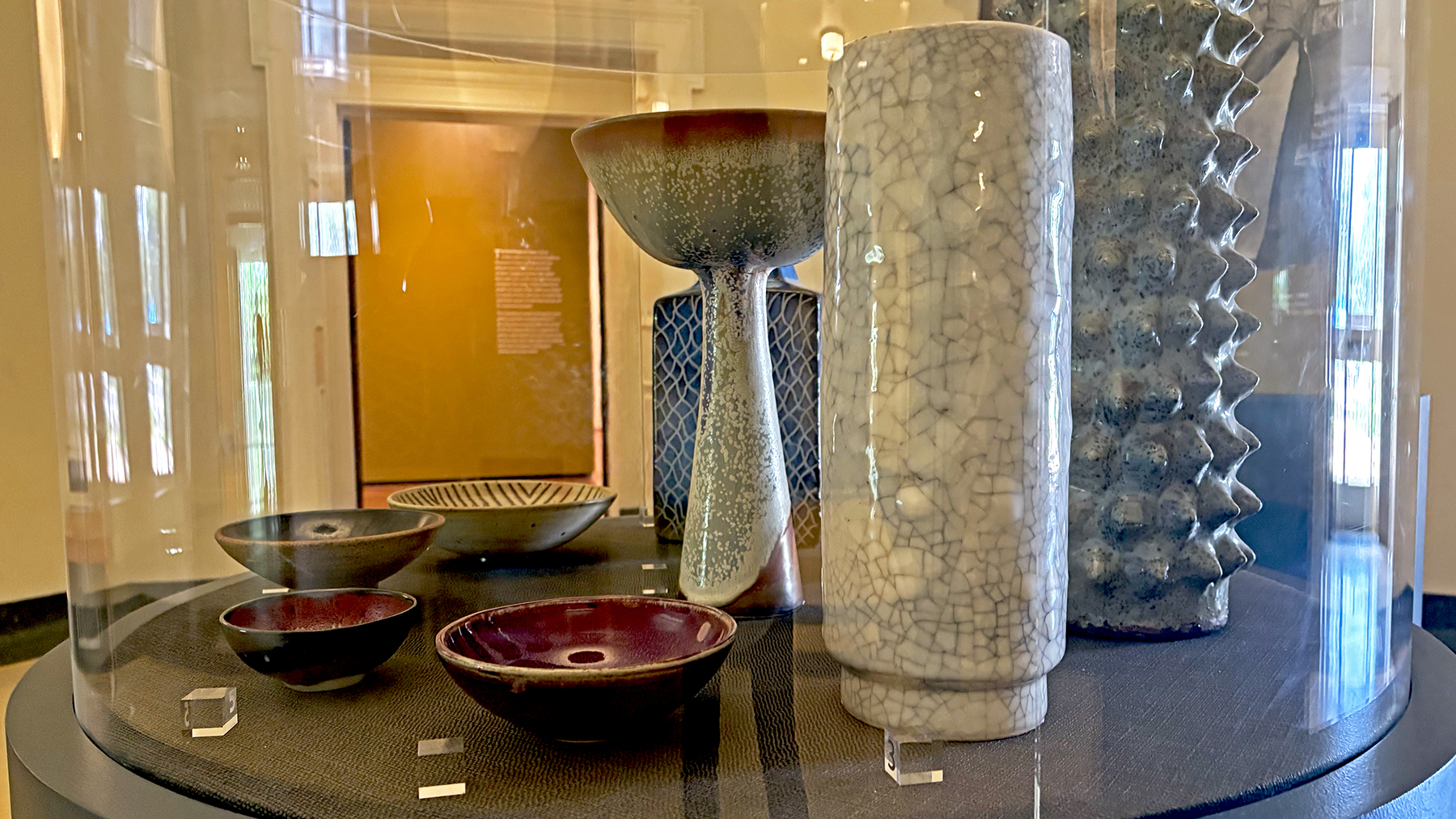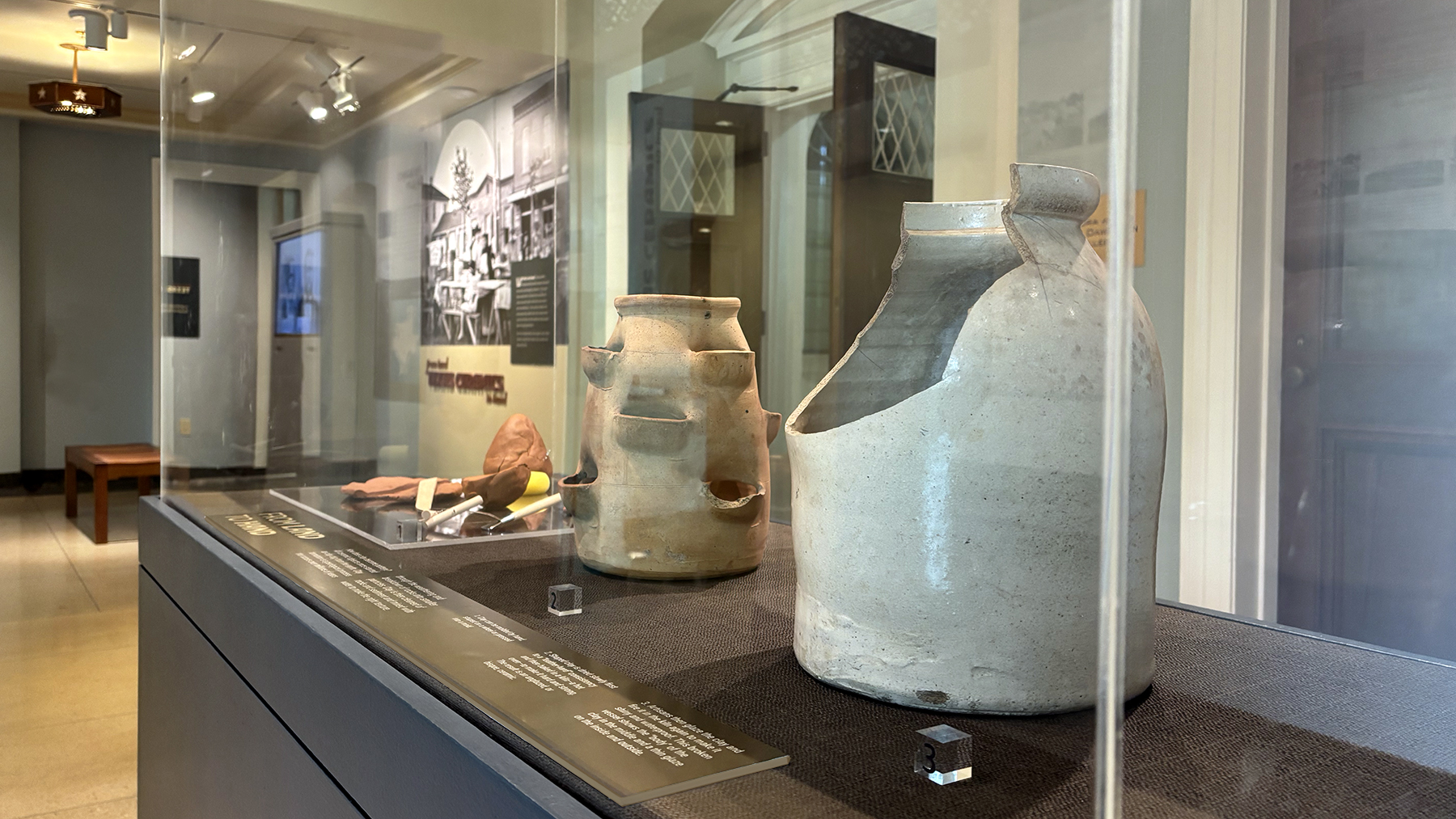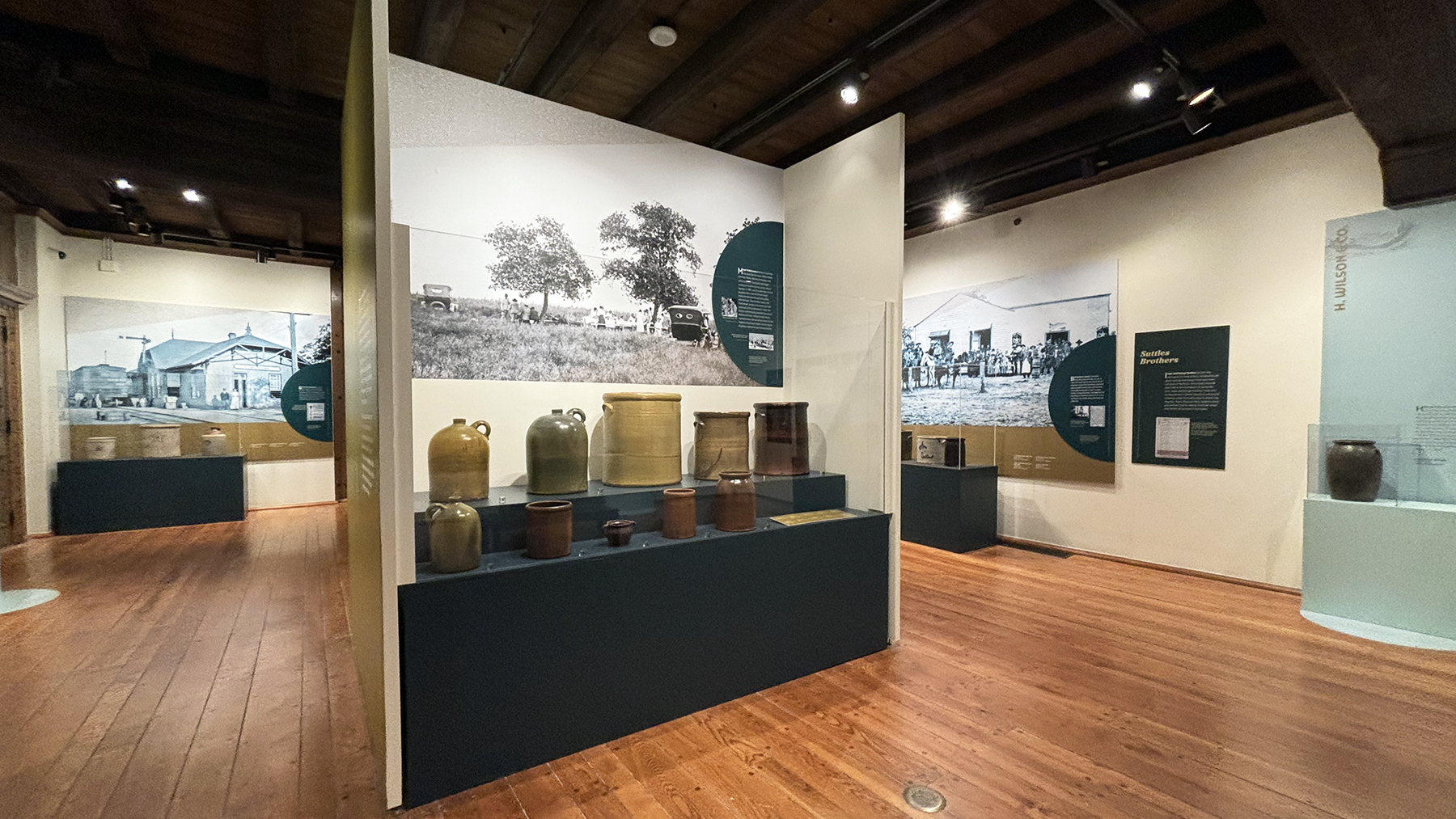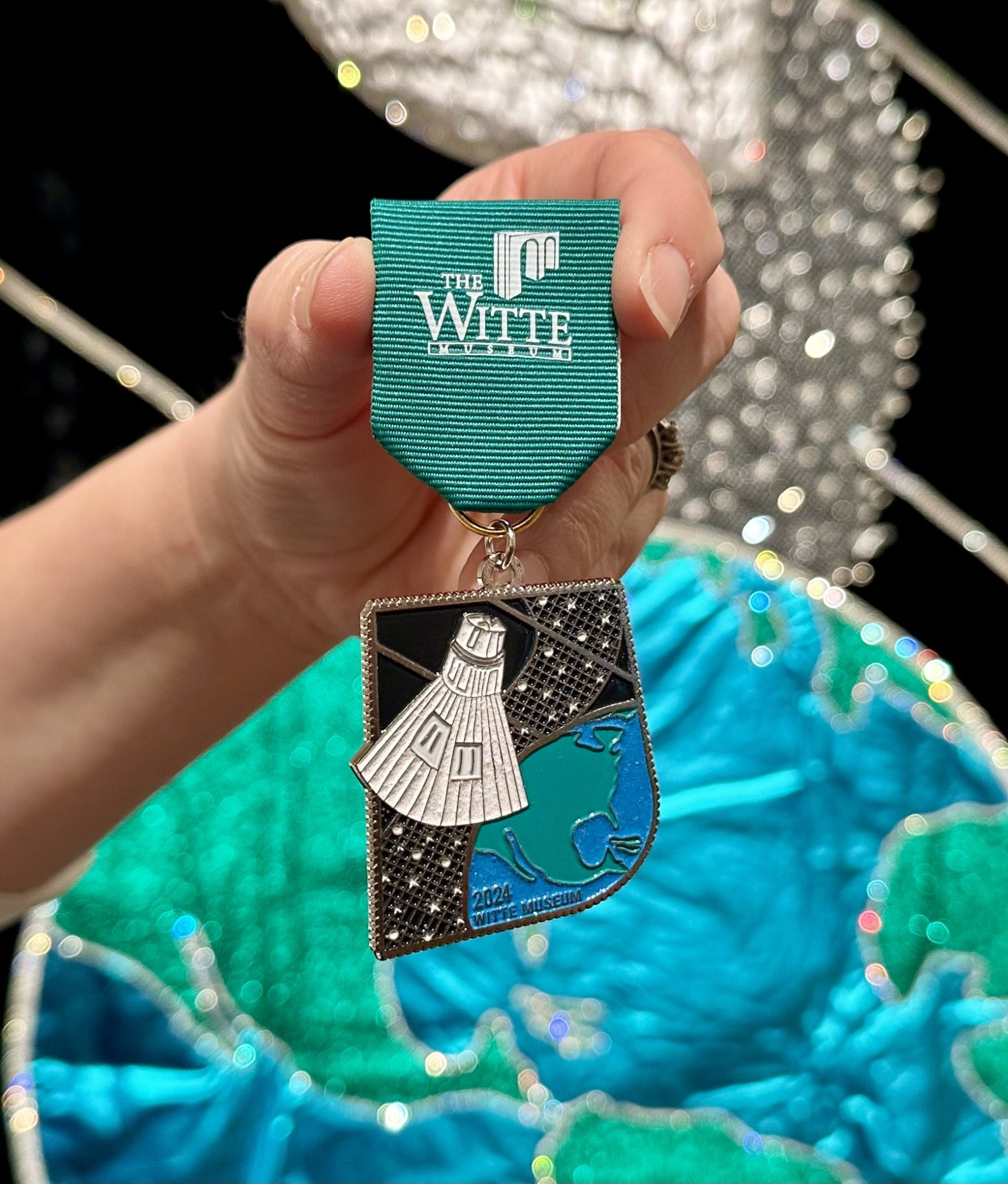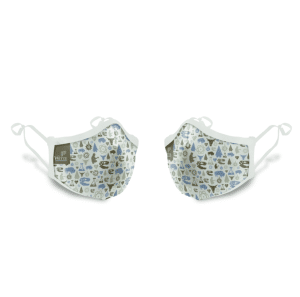With their own hands, Texas potters transformed the land’s natural resources into useful and beautiful ceramics.
The clays they worked with—formed from mineral-rich soils across the state—held their own colors and characteristics. Their pottery reflects the landscapes they called home, the cultures they carried with them and the traditions they passed down through generations. Texas Ceramics: From Land to Hand reveals the stories of these artisans and how they sculpted the tools of daily life from the earth beneath their feet.
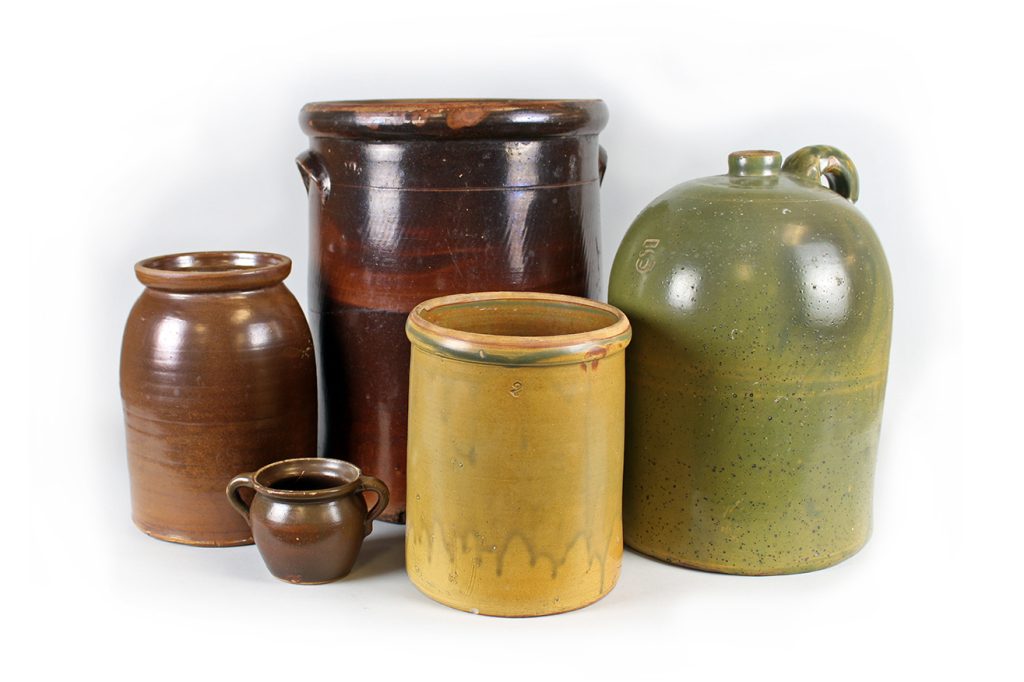
Texas potters developed a ceramics industry along the Wilcox Formation—a rich clay deposit stretching across much of Texas. The wares they made for everyday use carry the marks of craftsmanship, culture and innovation. The exhibition features more than 45 objects from the Witte’s Texas History Collection, including jugs, crocks, bricks and more.
Featured potters include:
- Hiram Wilson, formerly enslaved, and H. Wilson & Co., among the first African American-owned businesses in Texas after Emancipation, known for pioneering durable vessels and distinctive horseshoe-shaped handles.
- The Suttles Brothers, Union Army veterans who introduced salt glazing to Central Texas.
- Meyer Pottery, a family-run operation near Atascosa that shaped thousands of handmade ceramics over eight decades.
Discover the science of clay and how geology, chemistry and human ingenuity shaped ceramics strong enough to last for generations. Uncover this often-untold story and reflect on the connections between land, labor and everyday life in Texas.
